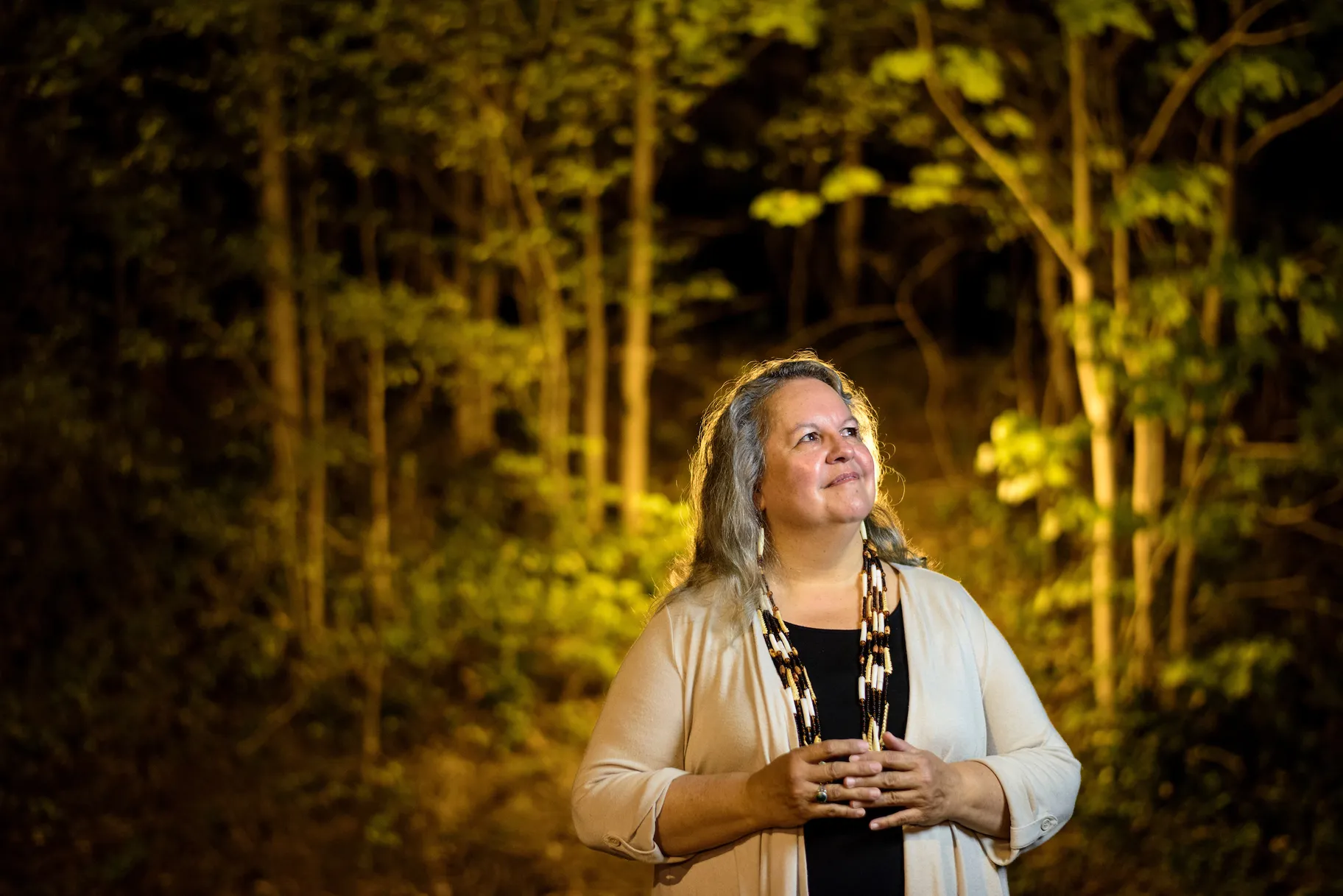In many ways, our relationships to nature — to the land, to wildlife, and to plant life — are central to who we are as humans, even if this relationship feels increasingly foreign in a digitized, automated world.
When it comes to environmental conservation, Indigenous communities have, for thousands of years, led the way — protecting their lands, respecting wildlife, and utilizing traditional knowledge passed down through generations.
Can a greater awareness and understanding of Indigenous knowledge help Western conservation efforts? Would we all benefit from a deeper spiritual and emotional connection to nature, plants, and the land?

Robin Wall Kimmerer, pictured here, says that “within the Indigenous worldview … and within the Potawatomi worldview, humility is a cardinal virtue.” Photo courtesy of Matt Roth.
In her book Braiding Sweetgrass, ecologist and author Robin Wall Kimmerer reflects on the knowledge she gained from her Indigenous American roots and how her curiosity about our relationship to the natural world inspired her study of botany.
“It is as if every being has their place and their set of relationships that connect them to everyone else,” says Kimmerer. “The more I learned about this, the more deeply entranced and curious I became, and that’s what really drove me not only to study botany, but to study plant ecology — the study of relationships among plants, both the physical and the biotic environments.”
Kimmerer shares a short story from multiple Indigenous nations, including part of the Haudenosaunee Creation Story and origins of Sky Women. Passionate about the reciprocal relationship between humans and nature, Kimmerer says it’s “a powerful story to remind us that we are not masters of the universe and that we’re interdependent with all other life.”
She also speaks about her “beloved little mosses,” which are the focus of her book Gathering Moss: A Natural and Cultural History of Mosses.” Kimmerer describes her introduction to the tiny green ecosystems as, “love at first sight. The first time I really stopped to look and put a little hand lens on those mosses and saw this exquisite little forest right there at your fingertips, I was hooked.”
Kimmerer remarks on our bias towards the big and powerful, noting that “small and humble beings can be as important [because of the] secrets they hold [as] among the oldest plants on the planet.”

In Braiding Sweetgrass: Indigenous Wisdom, Scientific Knowledge and the Teachings of Plants, author and ecologist Robin Wall Kimmerer says, “I’ve always been in love with plants’ creativity and finding out their ways of living and their amazing adaptations. I think about them as teachers, in that they’re problem solvers.”
Kimmerer also shares her perspective on land rights and suggests there’s “a possibility of thinking differently about our relationship” with the land.
“What if you imagined yourself into the space of the ancient Indigenous worldview, where the land is your relative, the land is your teacher, the land is your healer, the land is your responsibility — not your right?”
Native American land rights have a focus for Mishuana Goeman (Tonawanda Band of Seneca), a professor of Gender Studies and American Indian Studies at UCLA’s Institute of Environment and Sustainability. Goeman, who’s also Special Advisor to the Chancellor on Native American and Indigenous Affairs, highlights the importance of Indigenous land recognition and says not to erase the past when it comes to the history of stolen Native lands.
“There’s this common misconception that Indians didn’t own land … we actually did have territories, we had marketplaces, we had meeting places that were shared pieces of land that were connected,” she says. “We had hunting spots and fishing spots.”
Land defines native American communities, Goeman says, influencing where people live and informing their aesthetics, arts, and languages. The ties between language and the land are particularly important as the locus of “traditional ecological knowledge of how the land can live in reciprocity with a certain group of people.”
“Reciprocity with the land,” Goeman explains, “is understanding that you’re tied to it. … Your whole health system is tied to that. To understand the connection between your actions that you take and the land itself. Native people have an amazing amount of knowledge to offer in terms of teaching, reciprocity, but also relationality to the land.”

Mishuana Goeman, pictured here, says that, “Native people have an amazing amount of knowledge to offer in terms of teaching reciprocity but also relationality to the land.” Photo courtesy of Mishuana Goeman.
Delve deeper into life, philosophy, and what makes us human by joining the Life Examined discussion group on Facebook.
Robin Wall Kimmerer is a guest speaker at UC Santa Barbara’s Arts and Lecture Series Tuesday November 14th at 7:30pm at Campbell Hall. Learn more about this and other events at artsandlectures.ucsb.edu.
